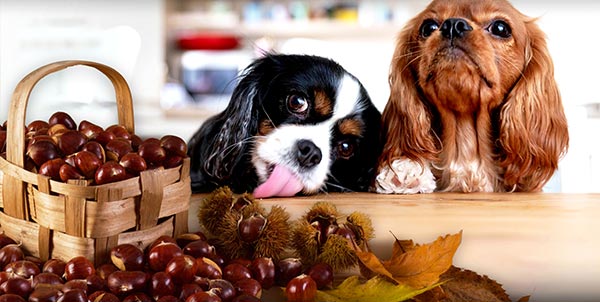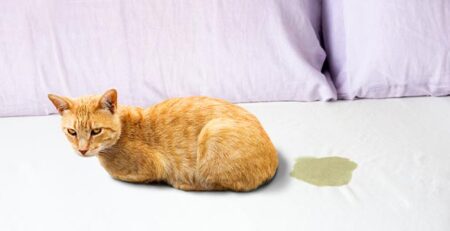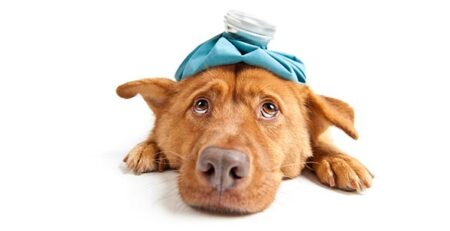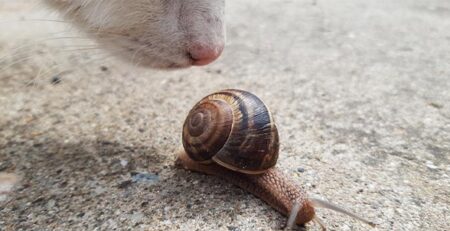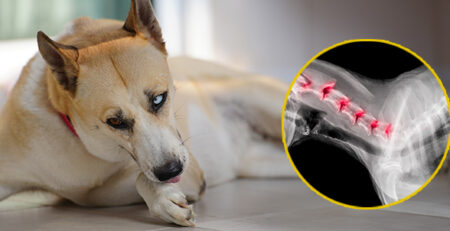Table of Contents
Chestnuts are the symbolic fruit of autumn: but can dogs eat them?
Chestnuts are yummy, nutritious and versatile in cooking.
But is it possible to share roasted chestnuts or baked chestnuts with dogs and cats?
Dogs and cats can eat chestnuts but with appropriate reservations and in limited quantities
Limited quantity means two or three at most for the dog, one for the cat, and only occasionally.
Obviously, chestnuts should be given peeled, cooked or raw as long as they are in their natural state, that is, without added salt, sugar or anything else.
Strictly exclude marron glacé and all sweet or savory chestnut preparations.
Unlike humans, dogs and cats cannot digest the starch in which chestnuts are rich
An excessive amount of chestnuts to the dog or cat could in fact cause diarrhea and abdominal pain.
In addition, it is always good to pay attention to energy balance without forgetting that in autumn we also need to make a change in the diet of our four-legged friends.
Modifying nutrition in autumn helps dogs and cats cope with the gradual drop in temperature
While fat and protein are reduced in summer because of the heat, in autumn their bodies need essential nutrients to cope with the moult: the thin summer fur is replaced by thicker, warmer winter fur.
In addition, decreased daylight hours lead to a slowdown in metabolism, which is also associated with decreased periods of physical activity during the day.
In the fall, dogs and cats should have a primarily protein diet with red and white meats, fish and vegetables that provide the animal with the right amount of vitamins and minerals.
Commercial and homemade food for dogs and cats
Commercial pet foods are an easy and inexpensive solution to meet the nutritional needs of dogs and cats.
In general, we can distinguish three basic forms of pet food:
dry (dry food)
wet (wet food)
moist seeds (semi moist food)
The main difference between dry and wet is the amount of water contained in the food
In dry foods it is usually less than 11%, in wet foods we find a percentage ranging from 60 to 87%, and in semi-wet foods it can range from 25 to 35%.
Although dry food can provide complete nutrition, some people feel that a diet consisting only of kibble can become boring for their pet.
So, adding a spoonful of a product that eventually looks very similar to our food gives the impression of making it a more enjoyable meal.
If, on the other hand, you offer your four-legged friend a homemade diet, try not to let him lack the right protein that suits the needs of a carnivore.
The nutrients that a balanced fall home diet must contain
However, the introduction of new food should always be gradual, with the new food being introduced over a period of 8 to 12 days, as too abrupt a change in diet could create intestinal discomfort for your pet.
The cat specifically is a carnivorous animal by nature, this means that it mainly assimilates nutrients by consuming meat.
Fruits and vegetables serve to provide him with a supplementary supply of vitamins and minerals.
Fall fruit for dogs and cats
Fruit can be eaten raw and only after removing stones, seeds and peel, and you must always feed it in moderate amounts.
The accumulation of fructose, which dogs’ bodies metabolize with difficulty, can in the long run trigger damage to the digestive, nervous and cardiovascular systems.
Citrus
Widely used in the pet food industry, they are an excellent source of vitamin C but are also high in citric acid, which can cause vomiting and diarrhea in dogs. Limited to one or two wedges every other day.
Khaki
Nutritionally outstanding food, low in fat and high in antioxidants. Persimmons are also a rich source of fiber.
Pomegranate
Rich in antioxidants and has very few calories. Since the seeds are indigestible to the dog, they should be separated from the pulp. This can be squeezed or blended and mixed with the other ingredients in the meal.
Blueberries
Excellent for fighting urinary tract infections, blueberries are also rich in antioxidants, minerals, vitamins A, C, B1 and B2.
Apples
An extraordinary source of natural fiber and is very rich in vitamin C and K.
Fall vegetables and vegetables for dogs and cats
The fiber in which vegetables are rich helps maintain intestinal motility in dogs and cats.
To make them more digestible and preserve their nutrients, you can boil them in a little water or steam them.
Sweet potato
Dogs really love the sweet taste and this is one of their favorite foods. The potatoes must be well cooked.
Pumpkin
Low in fat, pumpkin helps keep your dog’s urinary tract clean.
Broccoli
Rich in vitamins A, C and K, fiber and trace elements, they are a recommended food but in moderate amounts because of the presence of ISO thiocyanate, a substance toxic to dogs.
Fennel
Low in calories and rich in fiber, minerals and vitamins, they can be consumed daily and are detoxifying for liver and kidneys, with diuretic effects.
Carrots
They contain high levels of vitamin A and beta-carotene, a powerful oxidant that helps improve vision. Dogs are fond of carrots: they love to gnaw on them and to enjoy them slowly.
Home feeding of dogs and cats should also take into account the age of the animal
The formulation of the home diet must also take into account the life stages of the animal, whether puppy, adult or elderly.
With aging, for example, a dog’s body undergoes changes that tend to progressively impair the functionality of certain apparatuses.
Decreased efficiency of the immune system, decline in cognitive function, and inflammatory phenomena in the joints often require the use for the elderly dog of supplements that prevent and delay the exacerbation of senility symptoms especially as temperatures drop.
How to choose a supplement for cats and dogs
The choice of supplement is, in fact, one of the key points in setting the home diet and especially in its effectiveness and maintenance of its positive effects over time.
The supplement should be balanced in all its components to avoid imbalances or deficiencies and should be specifically formulated according to the needs of the animal and its age group.
Even when choosing a supplement, do not fall into the mistake of improvising as a nutritionist but consult your trusted Veterinary Nutritionist.
Regarded by some as superficial or unhelpful, the advice of a nutritionist is actually essential where proper nutrition of dogs and cats at any specific time of year has a particularly positive influence on the animal’s mental and physical well-being, as well as on the length and quality of its life.
Book a specialized consultation with our Veterinary Nutrition Experts: the veterinary doctors on our staff are always available to you.
We would also like to remind you that Clinica La Veterinaria is always open h24 every day including holidays and with First Aid service from 8 pm to 8 am.

